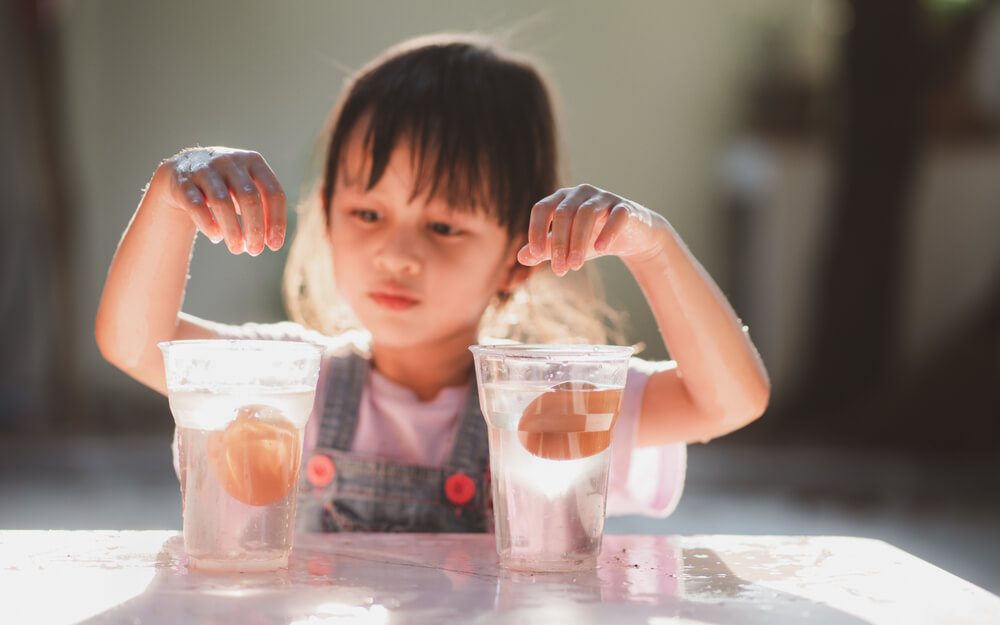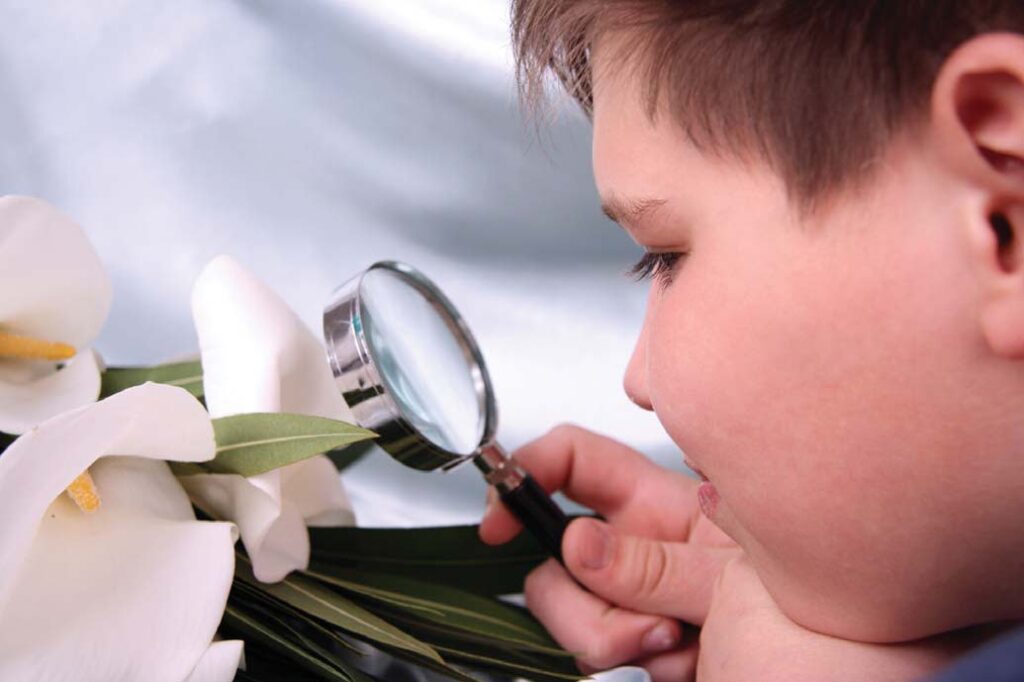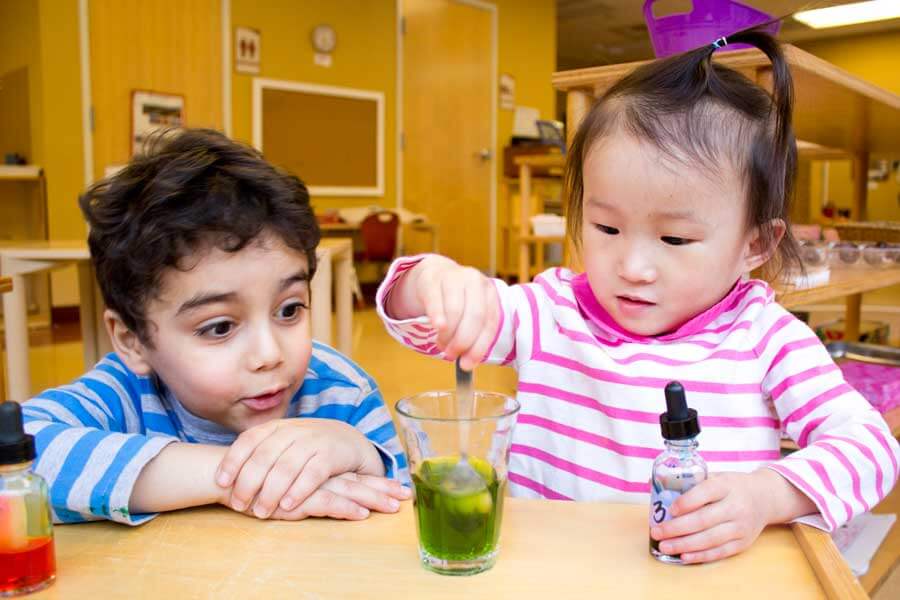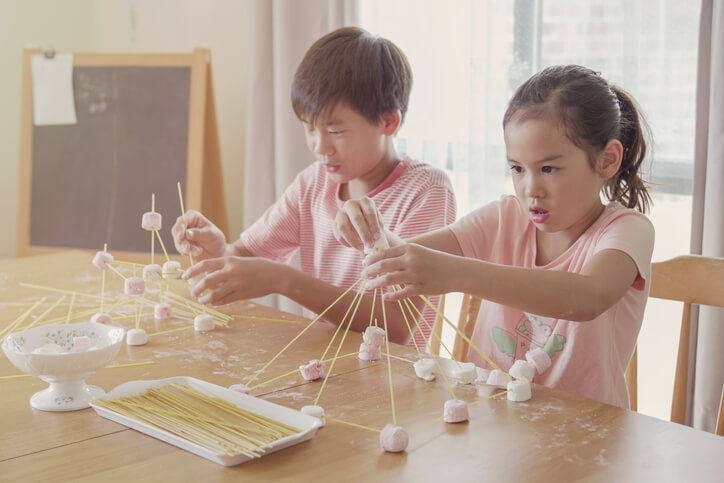Are you involved in Montessori learning? Are you involved specifically with science within Montessori? Do you have trouble finding ways to teach science with Montessori, or are you just curious how science is taught in Montessori? If you answered yes to any of these questions, find your solutions here!
Science is taught in Montessori through methods of demonstration and experimentation. It consists little of reading and lecturing and rather allows the instructor to first give an idea of the topic to the students and then let them experiment and learn from personal hands-on discovery.
If you are wanting to learn more about how science is taught in Montessori, keep reading on.

What is Montessori Science?
Montessori science is broken down into the categories of zoology, human biology, botany, earth science, physical science, as well as mechanics and technology. Throughout the entire ideals of Montessori, the attitude towards the child is to allow them to be led by their own curiosities and for them to be the ones in control of what niche they dive deeper into.
Within the Montessori science curriculum, there are no textbooks, PowerPoints, or hour-long lectures from the teacher. The Montessori science motive is to encourage natural curiosity for the many areas and facets of what is classified in and as science. This subject and topic are introduced to children as early as preschool, where much awareness and wondering of the nature around them begins.
Once the child has determined the area of science that piques the most interest to them, contrary to traditional teaching methods, they are then given materials and basic instructions for them to begin experimenting with an aspect of their chosen scientific area. It is important to also note that the students are not thrown into a broad, many-faceted type of subject, but rather break down the basics to give the student a foundation to build on and to make inferences for themselves.
For example, one student may have a special interest in the topic of fish. You could begin talking about the differences between freshwater fish and saltwater fish, but it would be easier for the student to build a foundation first by learning anatomy and what makes up the organism that is inhabiting the fresh or saltwater so they can make more educated inferences about how they live and survive in each type of water and why.

Why is Science Important in Montessori?
Science is a subject that allows not only the student to discover and spark natural curiosity in themselves but for the students to develop a passion and hunger to learn as much as they can because they genuinely want to. This result will not occur for all subjects, but science is where that curiosity aspect of education is often ignited and lit through other subjects such as history, language, etc. Educators can identify the most success with Montessori when the students are asking themselves or their parents for more sources of information regarding the subject.
Montessori does not teach specific facts and concepts, not to be deceptive or ambiguous in the information they are teaching, but in the effort to encourage the students to have as much of a natural learning experience as possible.
It is not always feasible to take a field trip to Africa to observe how lions prey on antelope, to then make the inference from observing that lions are carnivores and hunt for their food. Thus, it is important for the student then to make assumptions, either right or wrong through observations and learn through trial and error. This encourages logical thinking in other areas of learning.
With this method of learning, it is important to note that there is not a set timeline for the instructors to teach a certain amount of material. It is open and flowing due to where the students’ interests stem from and then continue and expand on that interest into other facets of science, building upon knowledge that has already been observed and understood. One of the reasons for this is to avoid the pressure of moving onto a topic that the student isn’t ready to fully grasp when they are continuing to comprehend.
Montessori Science, in particular, is the subject where the learning of basic observing and inferring skills are practiced and developed. These skills can then be applied to other subjects, making for a richer learning and deeper understanding experience.

What is a Montessori Science Shelf?
Replacing bookshelves, a Montessori shelf is a location in the classroom where all of the necessary and required materials that are applicable for the day’s activity or experiment are organized. A Montessori Science shelf is one that contains the materials for any and all of the students’ chosen observations or experiments. As there are frequently observations and experimentations going on in the classrooms directed by the Montessori curriculum, the science shelf may just be the most applicable out of all the subjects taught in Montessori.
A Montessori Science shelf is set up in an organized fashion with however many shelves are needed. The most basic, and often the most used materials, will be laid across the top shelf and as the shelves work down, the materials will increase in complexity. While this system may seem unnecessary and irrelevant, it actually creates an environment that encourages the mission and purpose of Montessori. With all of the materials placed out in front of the students, it creates a simpler process to prepare the students and their materials for their experiments, and to create a sense of habit and routine.
Because the observing and experimentation process can be very new and unfamiliar to the students, the large influx of new information can be overwhelming for most students. The primary purpose of the Montessori Science shelf is to create a simple stepping stone as the students begin their complex observations and experiments so they feel in control as they begin something that is yet unknown to them.

What is Zoology in Montessori?
As in accordance with the rest of how the Montessori curriculum works, zoology is first introduced in a very broad sense, giving a big picture view of the basics of zoology first. What Montessori considers to be the big picture of Zoology are these five points: monera, protista, fungi, plants, and animals.
This overview is kept short and simple, purely describing the main characteristics of each point. This is done to help the students understand where they can categorize and base their inferences and assumptions.
After a brief introduction to the basics of zoology, the students will then be asked to go through and categorize all of the animal kingdoms into those five points that were presented to them in the big picture overview. The easiest way to ask the students to do this is to ask them what animals have vertebrae and what animals don’t.
This may lead to a piqued interest in a discussion of evolution, and it is important to note that veering off track to discuss the basics of evolution can be helpful in expanding the student’s understanding of why some animals have vertebrae and why some don’t.
This could possibly lead to an experimental activity by participating in the making of a diagram of the fish’s basic anatomy.
Possible branches that you could go onto, if the opportunity presents itself, are linking some of the aspects from zoology into history. Studying the Paleozoic era and discussing the basics of the evolution of life on earth, may be a point of interest to students who pick up on the ideas quickly and want to learn more about their origin and history.

When Should Zoology be Introduced in Montessori?
Zoology is one of the subjects that you can begin introducing as early as the ages of 3 years old to 6 years old. The main objective of introducing zoology to students, especially younger students, is to simply allow them to sort and classify. Begin with them differentiating between what are plants and what are animals. Then move on to categorizing types of plants and types of animals. This is meant to help the student know the differences between the two, but also to create the basics of the identification skills.
If and when these skills and understandings are made, and the student presents interest in moving forward and learning more, you can encourage them to make a chart of what they have learned. They can do this by cutting out pictures of different plants and animals from magazines or printing photos from the internet and then pasting them into the correct categories.
If that form of activity is not of any interest to the student, it would also work to have them draw and color pictures of the various animals and plants and then categorize them as well.

What is Biology in Montessori?
Biology is often a subject that comes up as one of the first that students have an interest in. Biology is all around them whether they realize it or not. They naturally become interested in themselves, and how they’re made up, as well as other living organisms such as animals, plants, trees, and flowers.
In Montessori, biology is split up into two categories: zoology and botany. Zoology consists of the study of animals, their structure, physiology, classification, and distribution. Botany consists of the classification of plants, their physiology, their structure, their ecology, distribution, and economic importance.
While this overview can come across as overwhelming, especially to younger students, it is important to note that it can be adjusted, to begin with, an introduction simply bringing an awareness of the living things around them.
As the student comes to have a basic understanding of living things, it would then be appropriate to move on to exploring the structure of plants, leaves, roots, and distribution. It is important to remember, specifically with the subject of Biology that it is a step-by-step process and at the student’s speed and desire to move on to the next aspects. It is easy for the student to get confused if you move too fast or overload them with information that they are not either prepared with or interested in.
Some of the effective methods of teaching any of the basics of biology would be either identification flashcards or matching diagrams. This will allow the physical act of moving each animal and plant into their designated category to create muscle memory, helping them to remember each animal and plant and in what category they belong better.

Why is Botany Imporant in Montessori?
When studying botany in Montessori, the instructions and experimentations should cover the life cycle of a plant, as well as the importance of not only plant life, but the importance and connections to human and animal life. While it is not necessary to have covered the basics of human and animal life prior to discussing botany, it is always helpful. In addition, know that all three topics, botany, human life, and animal life are all connected and can be helpful in learning about the other as you move through each topic.
Specifically, within the study of botany, it is important for the students to understand and recognize how plants provide for our living and survival. This can be done through a variety of hands-on projects; an example would include planting and caring for a small garden. A follow-up project would be to have the student then evaluate how the proper care of the plants, or lack thereof, affected the plant.
Additional subjects that can be linked and used as jumping-off points to continue discussions and experiments according to the students’ interests are geography, history, and zoology, specifically focusing on how the plants within those topics have significance. It is important to help the student understand that it is not enough to simply be able to identify plants, their anatomy, and how they provide for us, but to develop a respect and appreciation for not only plants but nature as a whole.


